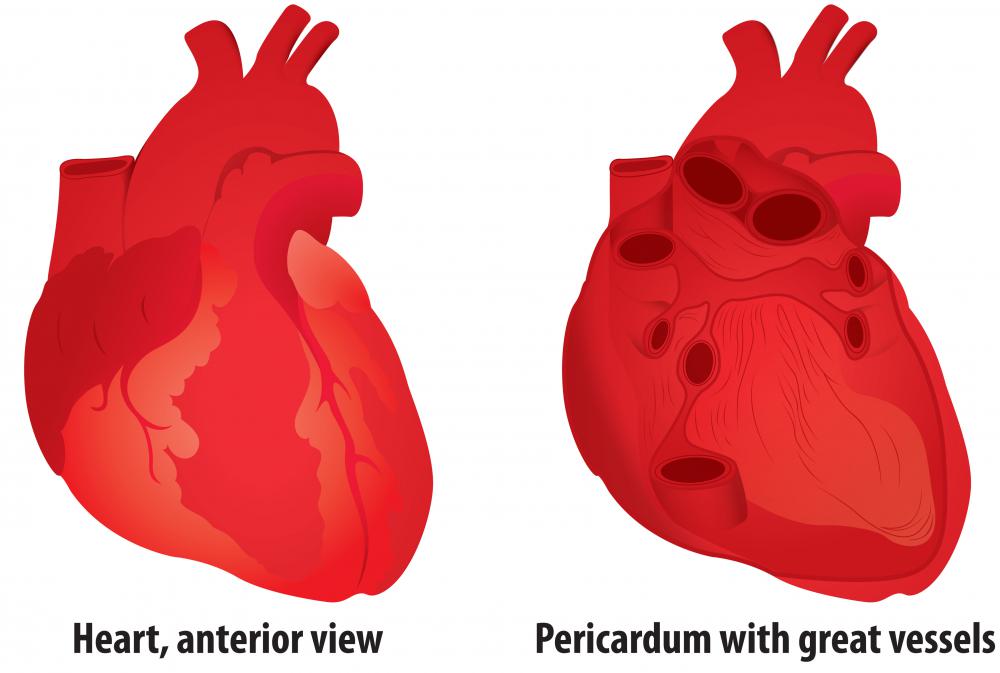At WiseGEEK, we're committed to delivering accurate, trustworthy information. Our expert-authored content is rigorously fact-checked and sourced from credible authorities. Discover how we uphold the highest standards in providing you with reliable knowledge.
What is a Pericardiectomy?
Pericardiectomy is a cardiac surgical procedure that removes all or part of the pericardium. This is the protective exterior sac of the heart. In some instances, it can become infected or stiffen and diminish natural heart function. When this is the case pericardiectomy could be considered, though it is not thought of as first line treatment under most circumstances.
An actual pericardiectomy can vary by surgeon preference and decision to remove most or all of the pericardium. This is usually an open chest procedure where the heart is accessed through the front of the chest. People can thus expect a sternotomy, which leaves a relatively large scar stretching from slightly under the throat to about midway down the chest. Pericardiectomies are performed under general anesthesia and typically require several days, at least, of hospital recovery, plus several weeks more of recovery at home. They will typically also require frequent follow-up visits with a cardiologist to assess heart function.

There can be different conditions that might necessitate a pericardiectomy. Constrictive pericarditis is one of the main reasons this surgery might be considered. The outside sac begins to thicken, making it difficult for the heart to function as normal, and this could be life threatening if it doesn’t respond to treatment. Different forms of pericarditis may present with excess of fluid in between the heart and pericardium, called effusion. With both high fluid and a stiffening pericardium, people may experience chronic pain and are at risk for heart failure.

In most circumstances, surgery is the last treatment option for diseases of the pericardium. A number of medical options or minor surgical procedures could be tried to improve heart function. These could include giving corticosteroids to reduce inflammation, giving various heart medicines to improve function, and prescribing diuretics to reduce fluid accumulation in the pericardial sac. Another option is to drain fluid from between the heart and pericardium (pericardiocentesis) to reduce pressure. Treating underlying causes of pericarditis can be of use too; for example, inflammation caused by bacteria might be addressed with antibiotic treatment.

The reason that pericardiectomy is usually the last treatment option is because it is generally thought to be a risky surgery. Statistics differ on survival rates, but about a four to five percent mortality rate during surgery is assumed. Doctors continue to research ways to improve surgery survival rate and recovery rates thereafter, and there are many theories on the best way to construct a treatment plan for person missing some or all of his pericardium. Studies of small groups sound promising, but as yet, this surgery is not one preferred when it can possibly be avoided.
AS FEATURED ON:
AS FEATURED ON:

















Discuss this Article
Post your comments